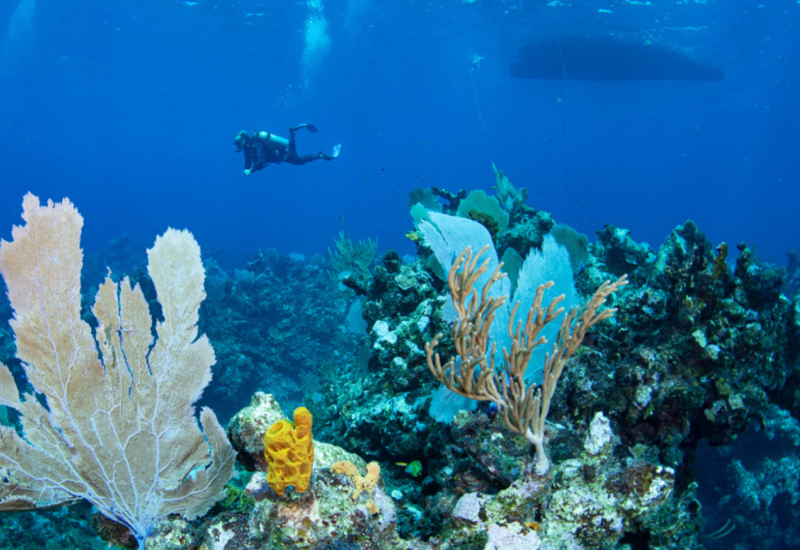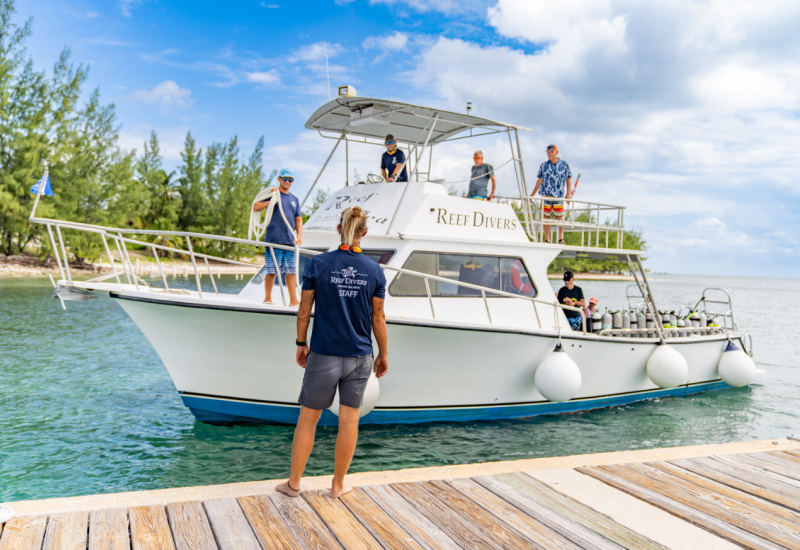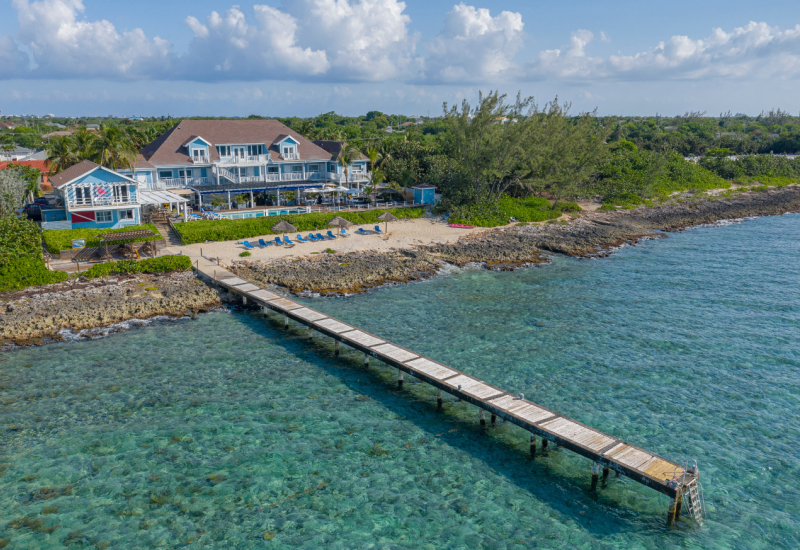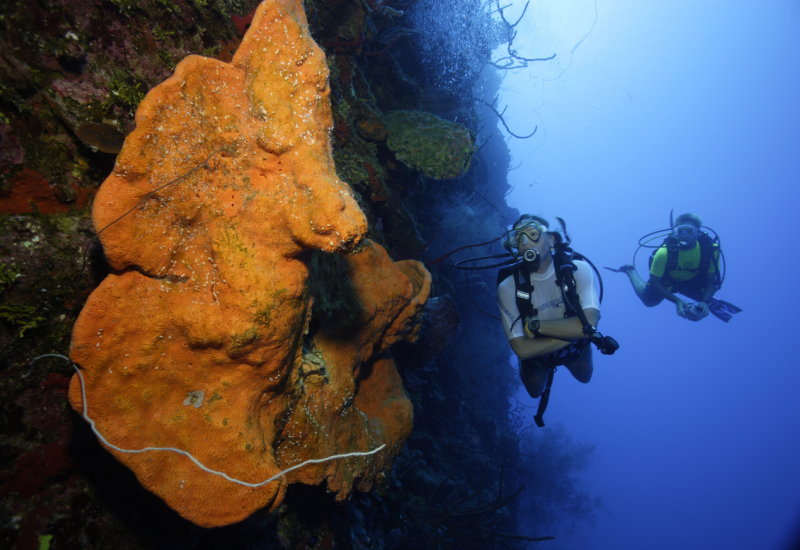Six Epic Wall Diving Destinations
Each year, we ask our readers to participate in our annual Readers Choice survey to determine the best dive destinations, resorts, operators and liveaboards. Nearly 5,000 readers provided feedback this year, which helped us to identify the value dive destinations below. View the complete 2020 Readers Choice Award rankings here.
BRITISH COLUMBIA
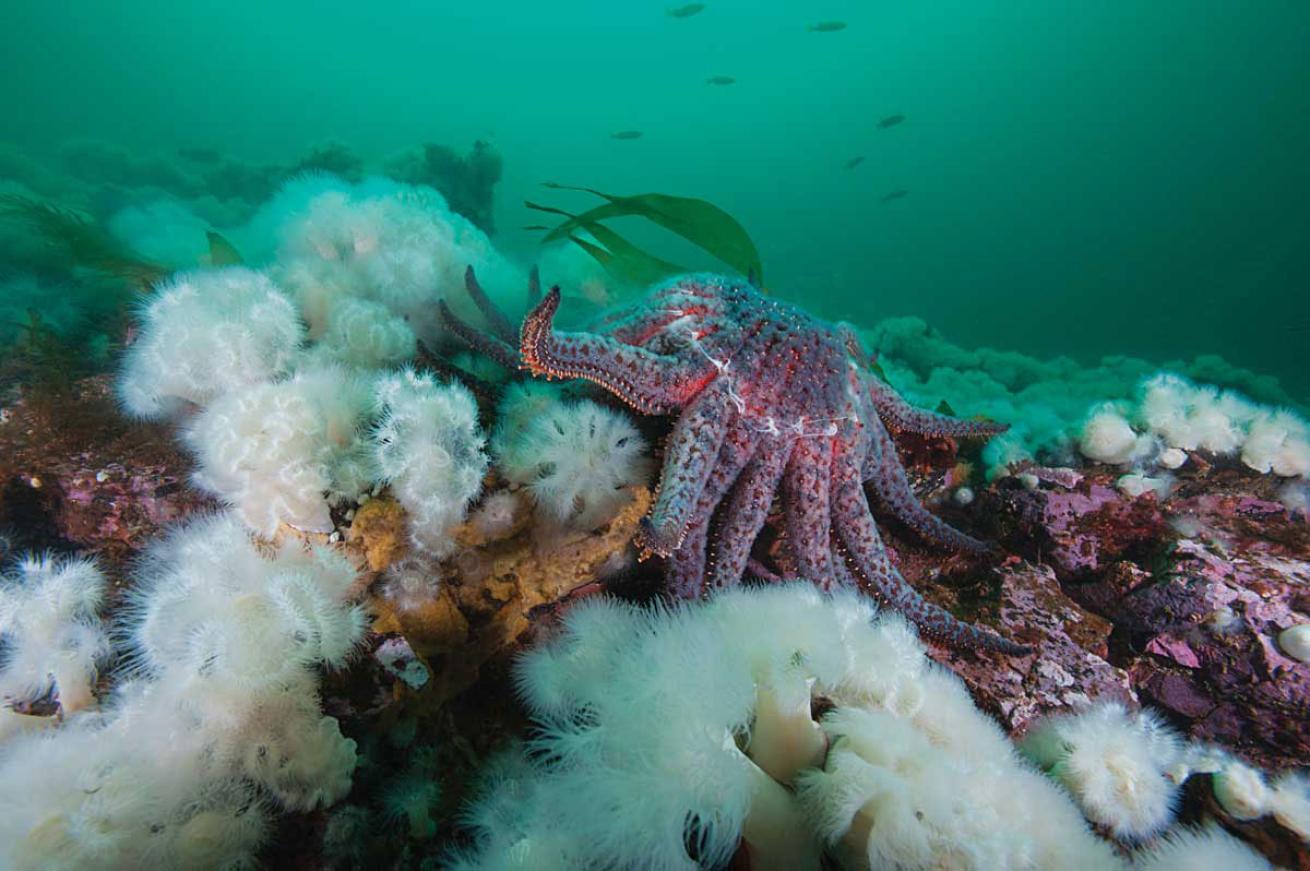
Mauricio HandlerInvertebrate life thrives in the cold nutrient-rich waters at Browning Wall off Vancouver Island, British Columbia.
Browning Wall is undoubtedly the best coldwater wall dive on the planet. Found off Vancouver Island’s Port Hardy, this sheer wall dropping to 200 feet abounds in invertebrate life—species one is tempted to label macro, swollen to mammoth sizes here thanks to the rich nutrient flow. The two biggies are the giant Pacific octopus, with arms spanning 6 feet, and the wolf eel, whose body spans up to 5 feet. Sea mammals such as sea otters, sea lions and white-sided dolphins are all common. But perhaps most rewarding are the invertebrates— acres of pink soft corals and plumose anemones, decorator crabs, nudibranchs that swell to a foot long, and starfish. What’s most shocking to any first-timer is not only the size of these animals, but the extent to which life covers the site. Beyond Browning Wall, the Port Hardy area has 20 more sites, including North Wall and Frank’s Wall.
TURKS AND CAICOS
Sheer walls, average visibility spanning 100- plus feet and a parade of big animals add up to make Turks and Caicos one of the world’s top wall-diving destinations. And the island of Grand Turk offers something few other places can. “On our dives, we have the backdrop of singing whales,” says Henry Harries-Jones, instructor with Blue Water Divers. Humpbacks show up mid-January to mid-April to birth their young. “You can do two morning dives, then in the afternoon go out whale watching. We’re one of the only places where you can get in the water with them.” Aside from whales, the destination sees its share of big life along the walls. Drop in anywhere from 40 to 100 feet to see reef sharks, hawksbill and green sea turtles, and eagle rays. Grand Turk diving is safeguarded through the protection of the Columbus Landfall National Park. The result is healthy corals and lots of fish. Grand Turk has over 40 wall dives.
READERS PICKS
Operators
Dive Provo, Turks and Caicos
Liveaboards
Turks and Caicos Aggressor II
Turks and Caicos Explorer II
PALAU
Currents up to 3 knots dial up the wall-diving experience in Palau, a Western Pacific island country east of the Philippines. When the current is really kicking, divers don’t have to. Armed with reef hooks, they can park themselves at the crux of the action, such as the epic Blue Corner. There, at the height of a tidal change, fast waters rip around the bend, attracting blacktip sharks and tornados of barracuda— all streaming past while divers stay put. Of course, when it’s slack tide, swimming along the wall is possible, no hook required.
In addition to viz of 100- plus feet, Palau packs big animals into nearly every wall dive. That means oceanic mantas with wingspans up to 15 feet. Napoleon wrasse drop in, curious enough to follow a group for much of the dive. Schools of chevron barracuda or jacks pass like heavy clouds over the reef edge. A bonus to diving Palau’s walls is that many sites, such as Ulong Channel, pack two experiences into each dive. A dive can start deep along the wall, then cut in, tracing a sand channel flowing toward the island interior. These channels run between ridges covered in corals. Divers can start along the wall and head in if the tide is incoming, or start at the island interior and ride an outgoing tide. Like every dive in Palau, it all depends on the flow.
READERS PICKS
Resorts
Palau Pacific Resort
Operators
Sam’s Tours, Palau
Liveaboards
Palau Aggressor II
Palau Siren
Rock Islands Aggressor, Palau
CAYMAN ISLANDS
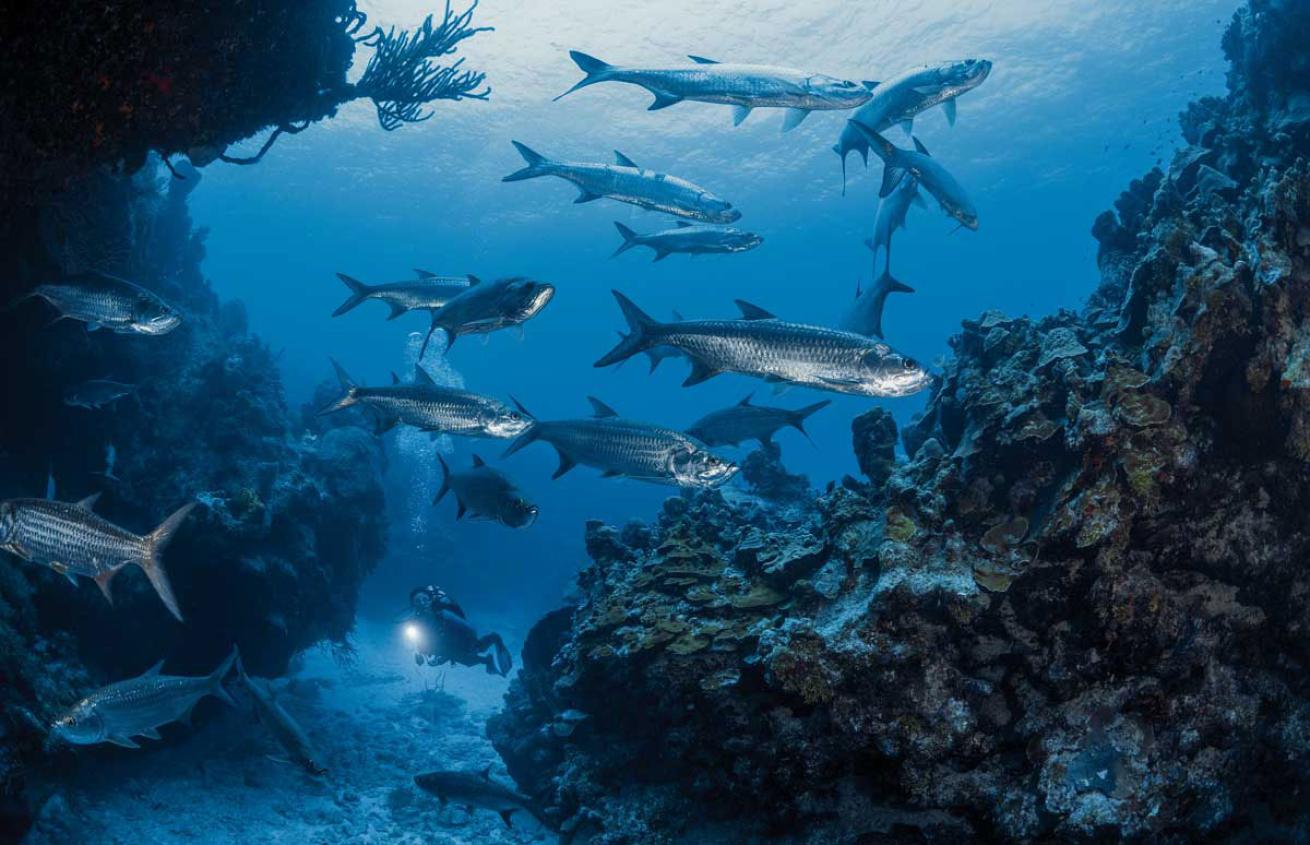
Brandon ColeAtlantic tarpon are commonly seen on the Cayman Islands' many wall dives.
The Cayman Islands are home to 365 dives— more than half of which are walls. Best of all, these sites aren’t for expert or advanced divers only. “Our walls have shallow starts, and the conditions make them highly accessible to new divers,” says Nick Curtis, instructor at Don Foster’s Dive Cayman. Those ideal conditions include calm waters and lack of currents. Drops start at 40 feet—15 feet on Little Cayman— so open-water divers can experience the thrills. And divers of every ability can maximize bottom times by staying shallow. Rare for a Caribbean island, every side of Grand Cayman offers wall diving. On the north side, find one of Curtis’ top picks: Tarpon Alley. “It’s one of my favorites for its beautiful archways, steep drops and good odds for seeing tarpon and sharks.” On the southeast corner, he favors Jack McKenny’s Canyon. Regardless of which side you target, you’ll take advantage of one of Cayman’s best selling points. “We have visibility between 80 and 150 feet most days, which is phenomenal,” Curtis says. “That visibility makes it easy to really get an appreciation for all that topography at once.”
READERS PICKS
Resorts
Cayman Brac Beach Resort, Cayman Brac
Cobalt Coast Dive Resort, Grand Cayman
Compass Point, Grand Cayman
Little Cayman Beach Resort, Little Cayman
Sunset House, Grand Cayman
Operators
Brac Scuba Shack Divers, Cayman Brac
Divetech, Grand Cayman
Don Foster’s Dive Cayman, Grand Cayman
Ocean Frontiers, Grand Cayman
Red Sail Sports, Grand Cayman
Reef Divers, Cayman Brac
Reef Divers, Grand Cayman
Reef Divers, Little Cayman
Sunset Divers, Grand Cayman
Liveaboards
Cayman Aggressor V, Cayman Islands
INDONESIA
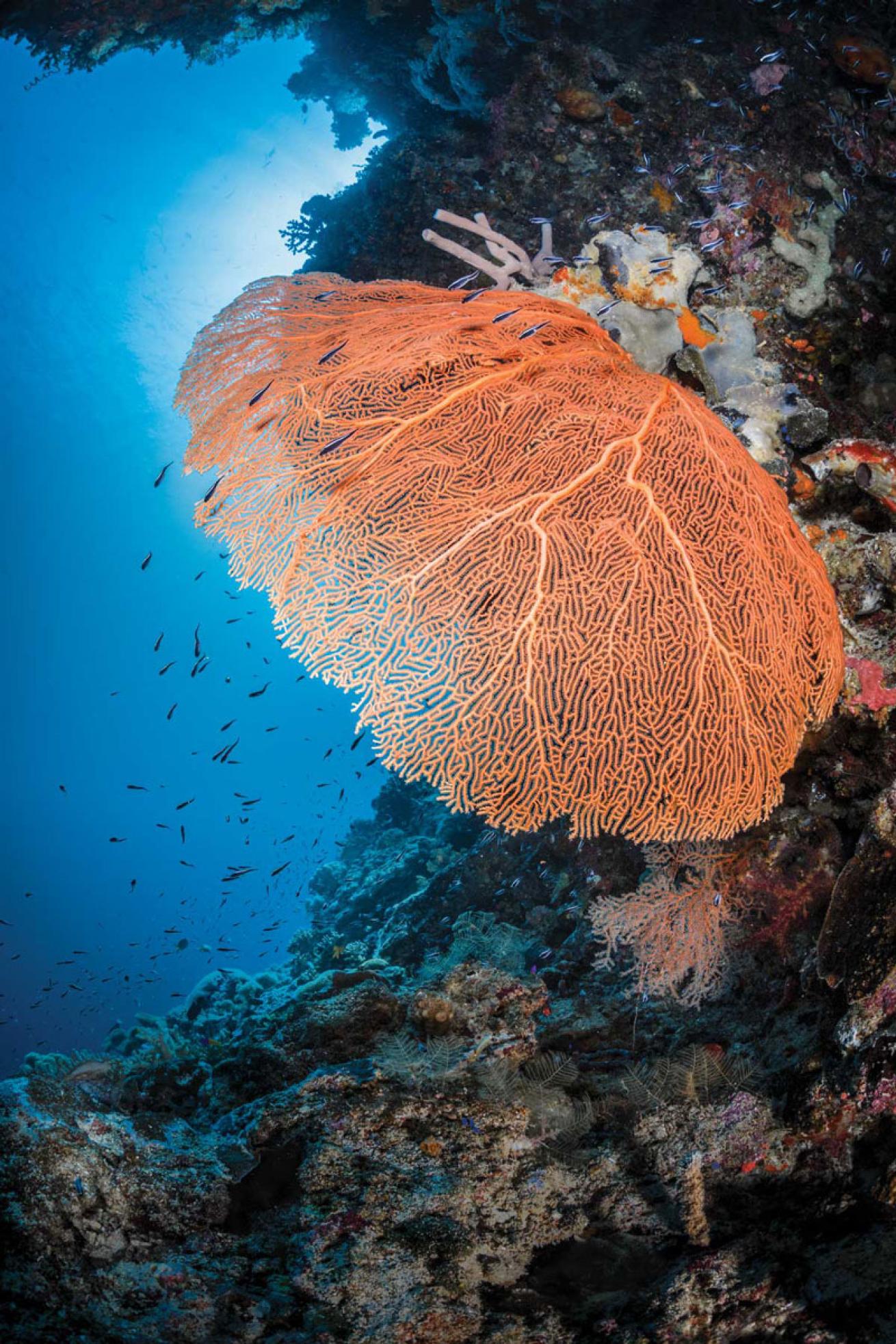
Jennifer O'neilA sea fan adds a splash of color to a wall in Wakatobi, Indonesia.
Indonesia’s archipelago delivers a handful of destinations with sheer, life-covered walls. Raja Ampat, where pinnacles and walls off Misool Island deliver drama in both underwater topography and wildlife, serves up some of the biggest numbers of drop-offs.
Magic Mountain, an offshore pinnacle, attracts Napoleon wrasse, barracuda and legions of jacks. Not only do oceanic mantas cruise the site, they linger at a cleaning station, allowing for long encounters with divers. The nearby site known as Four Kings is a collection of four pinnacles, prized for the candy-colored soft corals blanketing every inch. Farondi Wall remains a strong favorite in the region for its larger fish life—schools of humphead parrotfish and angelfish are prolific—and also for its macro finds. Here, divers can pore over ornate ghost pipefish and whip gobies. Plus, at the site Goa Besar, a 75-foot tunnel houses the tiniest of all: Hippocampus bargibanti and Hippocampus denise, two species of pygmy seahorse. It all adds up to an overwhelmingly memorable experience, troubling only if faced with the decision to name what was most special—the drama of the landscape, the curtains of fish or the wonder of the pint-size seahorses.
READERS PICKS
Resorts
Wakatobi Dive Resort, Sulawesi, Indonesia
Operators
Wakatobi Dive Resort Dive Center, Sulawesi, Indonesia
Liveaboards
The Arenui, Indonesia
Dewi Nusantara, Indonesia
Pelagian, Sulawesi, Indonesia
RED SEA
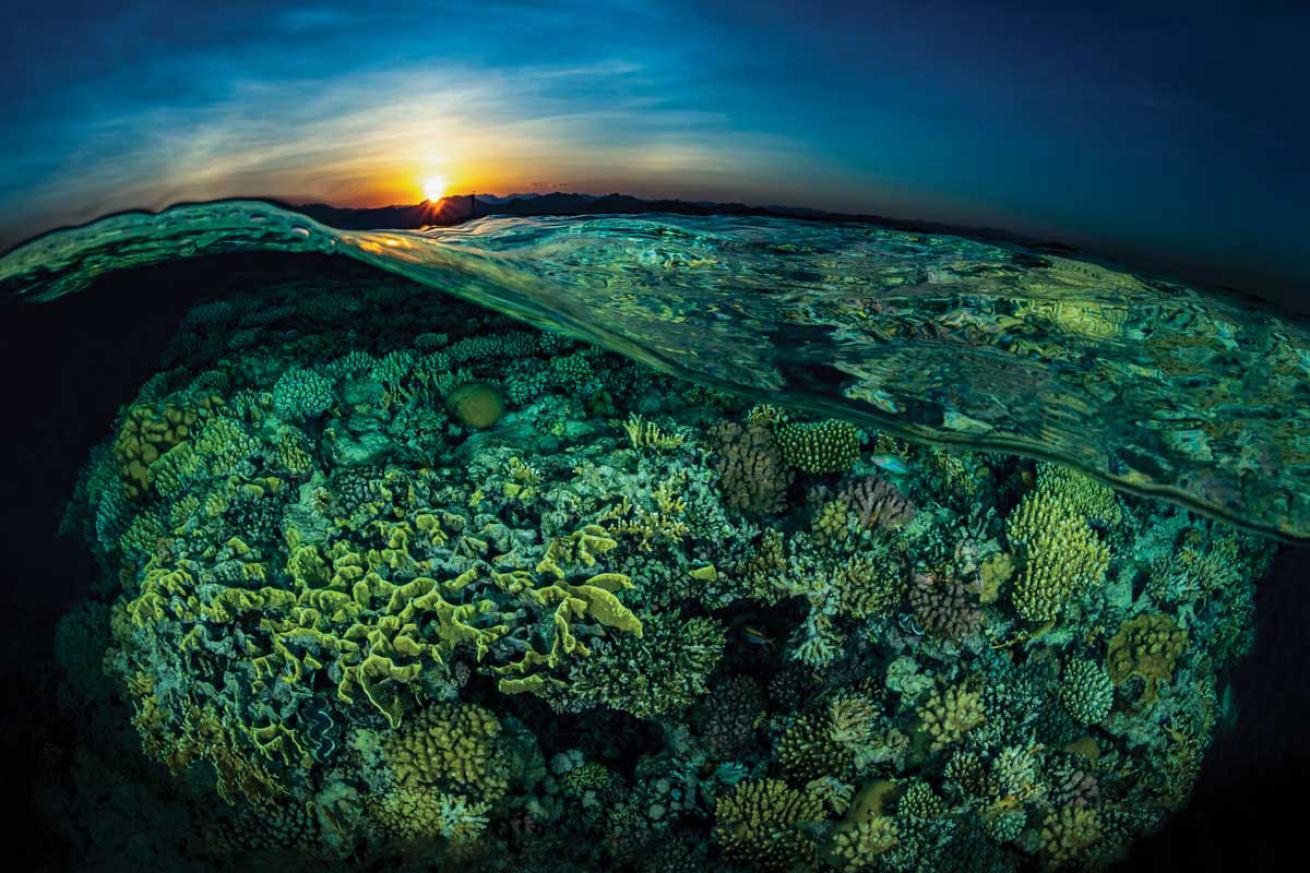
Tobias FriedrichCorals cover Gordon Reef in the Straits of Tiran; healthy coral-covered walls abound in the Red Sea.
In the Red Sea, divers can encounter sharks on nearly every dive: Oceanic whitetips, threshers, gray reefs and hammerheads are all in the mix at sites ranging from the Brothers Islands off Marsa Alam, Egypt, to the reefs of the Straits of Tiran in the north near Sharm El- Sheikh. Along with sharks, this swift water draws in mantas, giant tunas, eagle rays and other pelagic life. Much of Red Sea diving is affected by strong currents, making the destination best suited to experienced divers and those comfortable in fast water. Wall dives in the Tiran area, including Jackson Reef and Woodhouse Reef, experience lesser and more predictable currents, making the area more accessible to those with fewer logged dives.
Those who do take them on will be treated to sheer drop-offs covered in anemones, broccoli corals and gorgonians that anchor schools of anthias, longnose hawkfish and anemonefish. With so much life, these sites are each a riot of color vibrating in the current.
READERS PICKS
Liveaboards
Red Sea Aggressor II, Egypt

